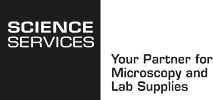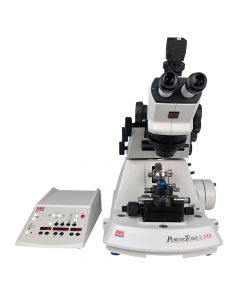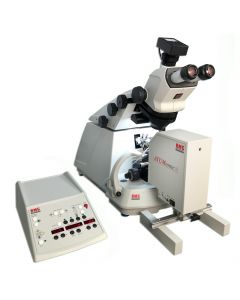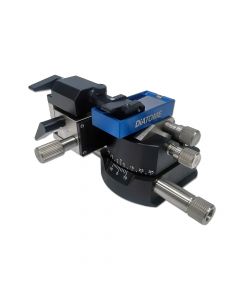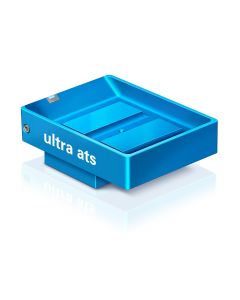Array Tomography
(4)Array Tomography is one way to acquire 3D data series of ultra or semi-thin sections of a tissue sample. Thereby, the sample is cut with an ultramicrotome and the sections are collected on a substrate for subsequent imaging with a SEM. Depending on the research project more or less sections are required to completely reconstruct a region of interest.
In comparison to Serial Block-Face Scanning EM (SBFSEM) and Focused Ion Beam (FIB), Array Tomography is a non-destructive technique. The collected sections can be stored, re-imaged at difference regions and resolutions, re-stained with heavy metals to enhance contrast or with fluorescent markers for correlative light and electron microscopy (CLEM). By now, Array Tomography is not only used for Connectomics but also in other fields of research, e.g. single cell reconstructions or even to gain 3D data of complex materials.
We offer different automated and manually controlled tools to collect serial sections depending on their amount, size and thickness:
Array Tomography
Connectomics – the map of neuronal pathways and connections of an organism’s nervous system – has been the driving force for the development of 3-dimensional (3D)-imaging techniques in light and electron microscopy. Even the latest fluorescence imaging approaches, such as super resolution microscopy (STED, PALM, STORM) lack the resolution necessary for a detailed reconstruction of neuronal systems including synaptic connections.
Due to resolution limits of light microscopy researchers started to investigate in techniques capable of reconstructing neuronal system at sufficient resolution to display neuronal connectivity. Within the last decade three powerful techniques based on scanning electron microscopy (SEM) have been developed and tailored for volume imaging at nanometer resolution: Serial Block-Face Scanning EM (SBFSEM), Array Tomography (AT) and Focused Ion Beam (FIB).
Array Tomography
Array Tomography is one way to acquire 3D data series of ultra or semi-thin sections of a tissue sample. Thereby, the sample is cut with an ultramicrotome and the sections are collected on a substrate for subsequent imaging with a SEM. Depending on the research project more or less sections are required to completely reconstruct a region of interest.
In comparison to Serial Block-Face Scanning EM (SBFSEM) and Focused Ion Beam (FIB), Array Tomography is a non-destructive technique. The collected sections can be stored, re-imaged at difference regions and resolutions, re-stained with heavy metals to enhance contrast or with fluorescent markers for correlative light and electron microscopy (CLEM). By now, Array Tomography is not only used for Connectomics but also in other fields of research, e.g. single cell reconstructions or even to gain 3D data of complex materials.
References
Q&A: Array tomography. Smith SJ; BMC Biol. 2018 Sep 6;16(1):98.
A targeted 3D EM and correlative microscopy method using SEM array tomography. Burel et al; Development. 2018 Jun 21;145(12).
Multimodal Hierarchical Imaging of Serial Sections for Finding Specific Cellular Targets within Large Volumes. Wacker et al; J Vis Exp. 2018 Mar 20; (133). Video-Link.
A carbon nanotube tape for serial-section electron microscopy of brain ultrastructure. Kubota et al; Nat Commun. 2018 Jan 30;9(1):437.
Hierarchical imaging: a new concept for targeted imaging of large volumes from cells to tissues. Wacker et al. BMC Cell Biol. 2016; 17: 38.
High-resolution whole-brain staining for electron microscopic circuit reconstruction. Mikula and Denk; Nat Methods. 2015 Jun;12(6):541-6.
New developments in electron microscopy for serial image acquisition of neuronal profiles. Kubota Y; Microscopy (Oxf). 2015 Feb;64(1):27-36.
Array tomography. Wacker I and Schroeder RR; J Microsc. 2013 Nov;252(2):93-9.
